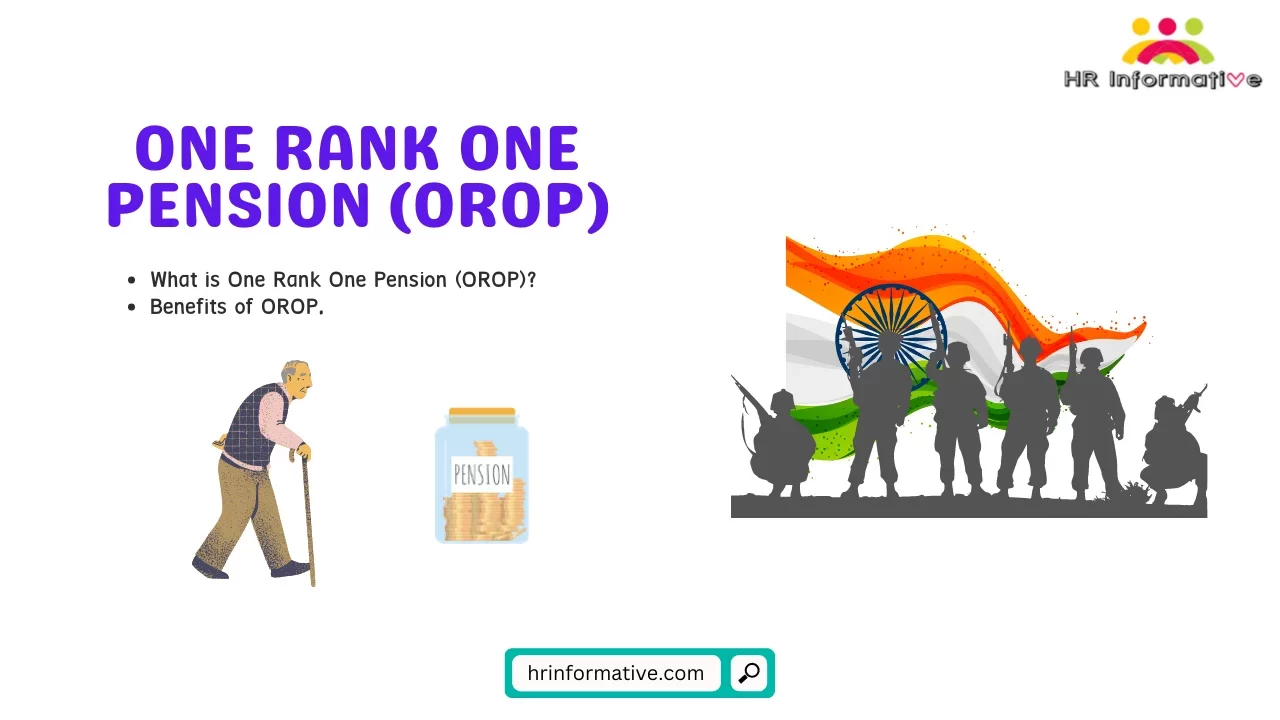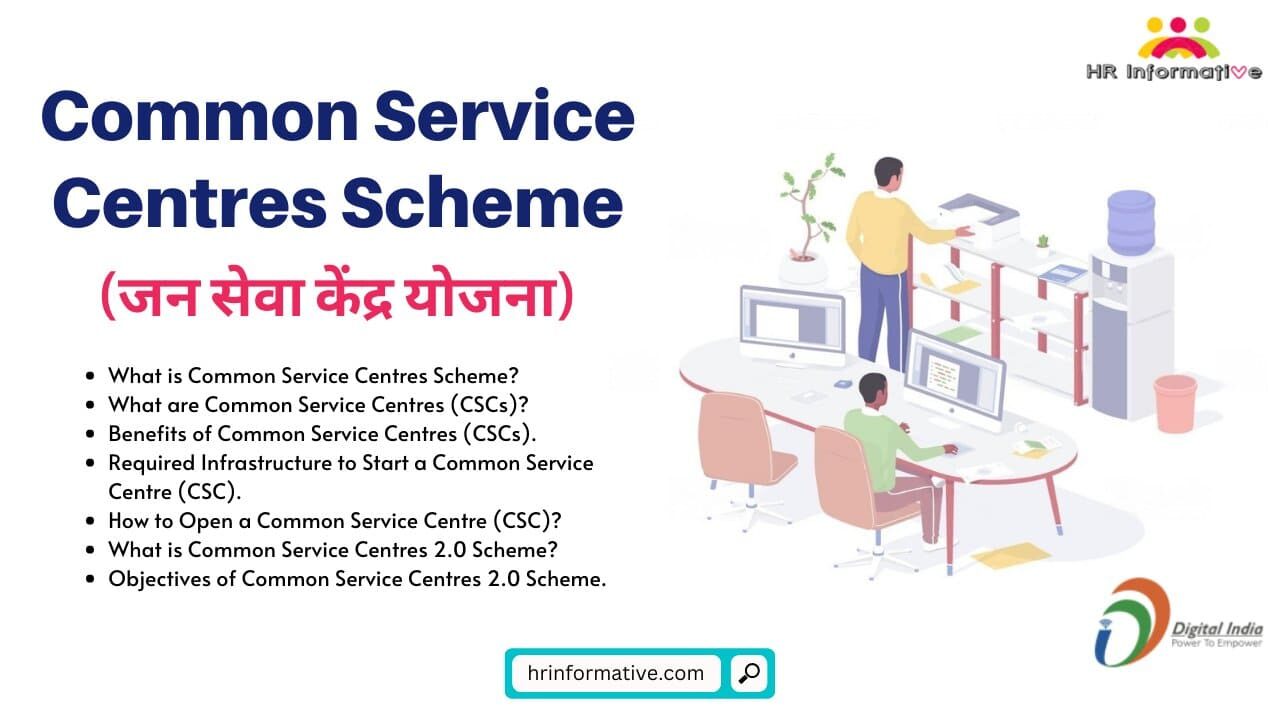Hello Friends! today we are going to talk about a pension scheme that was launched by the government, especially for Armed Forces Personnel. The name of this pension scheme is One Rank One Pension (OROP). Please read the article till the end to get the complete details on this.
When two soldiers retire after serving for the same period but there is a difference of a few years between their retirements and in the meantime, a new pay commission also comes, then the pension of the one who retires later will increase according to the new pay commission. But the pension of the soldier who retired earlier does not increase in the same proportion. To address this disparity One Rank One Pension Scheme (OROP) came into force.
Ex-Servicemen had been requesting for implementation of the One Rank One Pension (OROP) Scheme for more than 40 years, but it was not finalized until 2015. The historical decision to implement OROP was taken on 7th November 2015, with benefits effective from 1st July 2014.
What is the One Rank One Pension (OROP) Scheme
One Rank One Pension (OROP) or Same Pension For Same Rank means that Armed Forces Personnel will get the same pension payment for the same rank and the same period of service irrespective of their date of retirement.
For Instance, an officer who has been in service for 15 years (from 1980 to 1995), and retired in 1995 would get the same pension as an officer who retired in 2005 and was in service from 1990 to 2005 (15 years).
Before ‘One Rank One Pension’, ex-servicemen used to get pensions as per the recommendations of the Pay Commission. Basically, it was based on the last salary drawn.
Opinions in Favour of One Rank One Pension Scheme
The following opinions are given in the favour of One Rank One Pension:
- With each Pay Commission, the gap between the pension of present and former pensioners has widened which is not justifiable.
- Military personnel is demoralized by low pay conditions compared to their civilian counterparts. This will also affect the serving officers and jawans.
- Armed forces personnel generally have short careers as about 80% of soldiers compulsorily retire between the ages of 35 and 37 and about 12% of soldiers retire between the ages of 40 and 54. This means they retire at a much younger age than the usual 60 years in the case of civilians. So there is a need for adequate support for military personnel to lead a dignified life.
- One Rank One Pension should be seen in the light of making the armed forces an attractive career option for the youth.
- This scheme will help in preventing the youth from getting lured into private enterprises and other government jobs.
Opinions Against One Rank One Pension Scheme
There are some opinions against One Rank One Pension which are given below:
- The implementation of this scheme will put a huge financial burden on the exchequer. The annual financial burden is expected to be between 8000 to 10000 crores and this amount will increase with each revision of pay.
- Some argue that the comparison with civilians is not correct as the armed forces get many other perks which are not given to civilians. They get dedicated army schools, colleges, hospitals, subsidized food and beverages, and quotas for children in universities and schools, the equivalent of which is not given to civilians anywhere.
Benefits of One Rank One Pension Scheme
There are several benefits of OROP Scheme:
- Armed forced personnel of the same rank and same working period will get the same pension.
- Armed Forces Personnel, who had retired till June 30, 2014, will cover under this.
- Pension of past pensioners would be re-fixed on the basis of the pension of retirees of the calendar year 2013 and the benefit will be effective from 01.07.2014.
- Pension will be re-fixed for all pensioners on the basis of the average minimum and maximum pension of personnel retired in 2013 in the same rank and with the same length of service.
- Pension for those drawing above average shall be protected under OROP.
- Arrears will be paid in four equal half-yearly installments. However, all the family pensioners including those in receipt of special/liberalized family pension and gallantry award winners shall be paid arrears in one installment.
- Pension would be re-fixed every 5 years.
History of One Rank One Pension (OROP) Scheme
The One Rank One Pension (OROP) model for the armed forces continued for 26 years after independence. That is, after independence, for 26 years, the former armed forces used to get pensions on the basis of the One Rank One Pension model.
In 1973, the government led by Indira Gandhi abolished the OROP model. Also, the Third Pay Commission reduced the pension of soldiers while increasing the pension of civilians.
In 1986, the government led by Rajiv Gandhi implemented the pension scheme in connection with the Fourth Pay Commission. It reduced the basic pay of seven officer ranks in the Army (and their counterparts in the Navy and the Air Force) by a fixed amount as specified by the rank. This resulted in reduced pensions for many personnel of the armed forces in 1986 and subsequent years. In addition, this led to a disparity in the pay scales of officers in the armed forces and their counterparts in the Indian Police Force (IPS).
What is Koshyari Committee Under OROP
In response to growing disquiet in the armed forces and growing opposition from ex-servicemen, the Government set up a ten-member all-party parliamentary panel, known as the Koshyari Committee, headed by Bhagat Singh Koshyari, a veteran of the Bharatiya Janata Party (BJP). The Koshyari Committee looked into the One Rank One Pension (OROP) issue and submitted its report in December 2011 after considering the evidence and hearing oral submissions for eight months. The committee unanimously found merit in OROP and strongly recommended its implementation.
Finally, in 2014, the government passed an order for the implementation of the One Rank One Pension (OROP) scheme.
Action Taken At The Time of Implementation of the OROP Scheme
The following action has been taken initially for the implementation of One Rank One Pension:
- As per the Government order, the pension of the ex-pensioners was re-fixed on the basis of the pension of the retirees of the calendar year 2013 and this benefit became effective from July 2014.
- The pension was re-fixed on the basis of the average of the minimum and maximum pension of the personnel retired in the year 2013 (in the same post in the same service period). The pension of the personnel drawing above the average has been retained.
- It was decided to review the pension every five years.
- The government appointed a one-man judicial commission to look into any anomalies arising out of the implementation of OROP.
Non-Eligibility for One Rank One Pension Scheme
Personnel opting for voluntary premature retirement will not be eligible for the One Rank One Pension (OROP) scheme.
Revision in Pension From July 2019 Under One Rank One Pension (OROP)
As per the rule of the OROP scheme, the pension has to be re-fixed every five years. According to this the due date was July 2019 but could not be done.
Recently The Union Cabinet chaired by Prime Minister Narendra Modi approved the revision of the pension of Armed Forces pensioners and family pensioners under One Rank One Pension (OROP). The amendment will benefit over 25 lakh pensioners.
Union Cabinet revised the pension of armed forces pensioners and family pensioners under One Rank One Pension (OROP) with effect from July 1, 2019. The arrears from July 2019 to June 2022 will also be given, which will total Rs. 23638.07 crores. The arrears will be paid in four half-yearly installments. However, all family pensioners including those who get special or liberalized family pensions and gallantry award winners will be paid arrears in one installment.
Earlier 20.60 lakh pensioners used to get benefits in this scheme, but now after revision 25 lakh pensioners will get benefits. The Union Minister told that the burden of Rs. 8500 crores will fall on the government.
Further, the ministry said that the Centre has spent around Rs 57,000 crore (Rs 7,123 crore per year) in eight years for the implementation of One Rank One Pension (OROP).
The Union Cabinet chaired by Prime Minister Shri @narendramodi today approved the revision of pension of Armed Forces Pensioners/family pensioners under the One Rank One Pension w.e.f.July 01, 2019. pic.twitter.com/SgY98ob2re
— Rajnath Singh (@rajnathsingh) December 23, 2022
Rank wise likely estimated increase (in rupees) in service pension under OROP w.e.f. July 01, 2019:
| Rank | Pension as on 01.01.2016 | Revised Pension w.e.f. 01.07.2019 | Revised Pension w.e.f. 01.07.2021 | Likely Arrears from 01.07.2019 to 30.06.2022 |
| Sepoy | 17699 | 19726 | 20394 | 87000 |
| Naik | 18427 | 21101 | 21930 | 114000 |
| Havildar | 20066 | 21782 | 22294 | 70000 |
| Nb Subedar | 24232 | 26800 | 27597 | 108000 |
| Sub Major | 33526 | 37600 | 38863 | 175000 |
| Major | 61205 | 68550 | 70827 | 305000 |
| Lt. Colonel | 84330 | 95400 | 98832 | 455000 |
| Colonel | 92855 | 103700 | 107062 | 442000 |
| Brigadier | 96555 | 108800 | 112596 | 505000 |
| Maj. Gen. | 99621 | 109100 | 112039 | 390000 |
| Lt. Gen. | 101515 | 112050 | 115316 | 432000 |
Conclusion
One Rank One Pension (OROP) is a good scheme for Armed Forces run by the Government which provides the same pension payment for the same rank and the same period. This initiative of the government is benefiting 25 lakh pensioners. But on the other hand, this scheme also puts an additional burden on the government.
Frequently Asked Questions (FAQs)
Q: What is the Full Form of OROP?
Ans: One Rank One Pension
Q: What is the definition of One Rank One Pension?
Ans: One Rank One Pension means Armed Forces Personnel will get the same pension payment for the same rank and the same period of service irrespective of their date of retirement.
Q: What is the effective date of the One Rank One Pension scheme?
Ans: The effective date of One Rank One Pension is 01 July 2014.
Q: Who headed the Koshyari Committee?
Ans: Koshyari Committee was headed by Bhagat Singh Koshyari, a veteran of the Bharatiya Janata Party (BJP).
Q: After how many years, the pension under OROP is re-fixed/revised?
Ans: Pension is re-fixed/revised every 5 years under OROP.
Related Posts :




